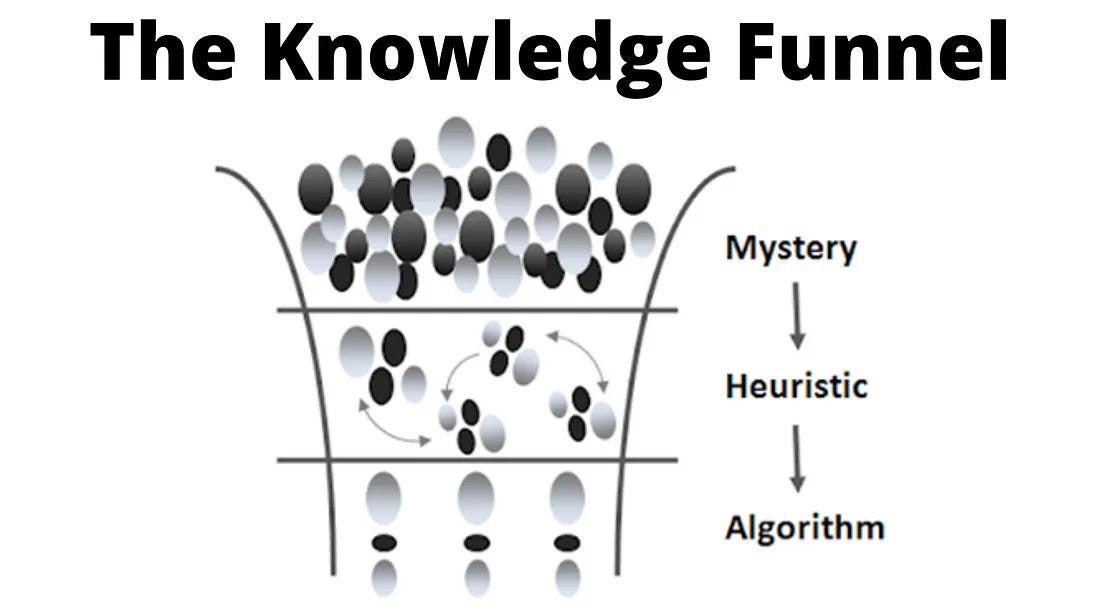Hello! I almost feel like an interloper, writing to you on a Tuesday morning. Those of you who have gotten used to coming here on Fridays or on the immediate weekends after, I’ve an explanation for you.
I’m trying out something here. Shorter pieces. Just like this last one. All week I’ve had the feeling like I’ve been cheated out of my meal with only the appetizer, so here I am with something more to share.
I’ve been an intrapreneur most of my career. Except for a brief few years where I was into pure business strategy and corporate finance, my job has been to come up with new sauces to sell. Selling new sauces is not easy. Once you have a sauce that works, it is easier to build a big sauce factory and scale up production than it is to muck around in search of new sauces. And that’s saying nothing about the odds of getting to a new formulation that can be turned into a sauce. I’ll save that for another day.
Today is about three things a sauce factory should do to encourage sauce innovation. But first, why search for new sauces if the current one is doing well? Sauces, no matter how good and loved, don’t last. Consumer tastes change, competition evolves, technology shifts. If all you do is run an algorithm that makes the same sauce more and more efficiently, imagine your plight when the market falls out of love with your sauce.
There’s a fantastic book from one of my favorite business writers, Roger L. Martin, on the design of business. It’s called The Design of Business. I’ll pull out a few ideas and quote a bunch of stuff from the book to show you—intrapreneurs and business owners and founders and CEOs—how to design an environment for innovation at your organization.
1️⃣Assign projects, not designations
2️⃣Lower the burden of proof (for new sauce ideas)
3️⃣Reset incentive structure
A quick intro here will set you up for what follows. Also, I encourage you to use this lexicon at work to communicate the following and related ideas.
Martin’s big argument is that all businesses follow the same sequence of stages en route to capturing value. He calls this path a knowledge funnel. The funnel has three stages: mystery, heuristic, and algorithm.
Taking McDonald’s as an example:
👉Mystery - ‘What and how did the mobile, leisured, mass middle class of southern California want to eat?’
👉Heuristic - A quick-service restaurant with limited menu options
👉Algorithm - Limited menu, quick-service, drive-through burger joint with precise procedures for assembling menu items
As you may have inferred, the funnel is a vehicle for exploitation. With each stage down, uncertainty and use of judgment reduces and efficiency improves. Businesses explore less, exploit more.
Back to how to design a knowledge funnel that makes your organization an innovation hub:
Assign projects, not designations
‘“Vice president of marketing” denotes a permanent position with a set of ongoing tasks,’ writes Martin, ‘such as managing the annual advertising plan, setting marketing budgets, coordinating with sales, and reporting quarterly on share trends to the CEO. This definition of work is entirely suited to a company devoted to running heuristics and algorithms.’’
Most designations point to a self-perpetuating aspect of the work the role entails. This body of work called marketing will never end, hence this position called a vice president of marketing will always be needed. Turf wars, finger-pointing, and blame game are the outcome. Here’s Martin’s suggestion:
Bring people together for a cause and separate them upon goal achievement.
Use a fluid project-based activity, suggests Martin. When the project is complete, allow the team to disband and then make another one in a new configuration for the next project. A good example of this system is P&G’s Global Business Services unit or most design consulting firms.
Question for thought: How would your CV look like if you assembled it in the form of projects, not positions?
Lower the burden of proof
The burden of proof on cash-cow businesses is clear and high. While that expectation may be justified of a sauce whose algorithm has been perfected over years, a new sauce needs time and space to find its spot.
Some ways to lower the burden of proof:
Skip hard financial targets - ‘The work of converting mysteries to heuristics and heuristics to algorithms is difficult, if not impossible, to financially plan or budget.’ You cannot schedule the arrival of new insights not strictly budget for the resources months in advance.
Look for leading indicators - Listen to qualitative feedback, look for the emotional response to your product idea without stipulating that numbers are the only way to measure impact
Reset incentive structure
‘The company would like compensation for providing the capital. The talent would like maximum compensation for running the heuristic,’ explains Martin. ‘If the talent were to advance the heuristic to the algorithm stage, the company could hand the specialist’s job to a much less expensive person.’
At the heart of how organizations are run is the principal-agent problem. If agents feel their priorities and the organization’s priorities are at loggerheads, they will behave in a manner that preserves their value to the organization.
Equity is a better incentive than performance-based variable pay because the value generated from coming up with new sauces far outstrips the value created from optimizing processes for old sauces.
That’s it this midweek. See you on Friday!


